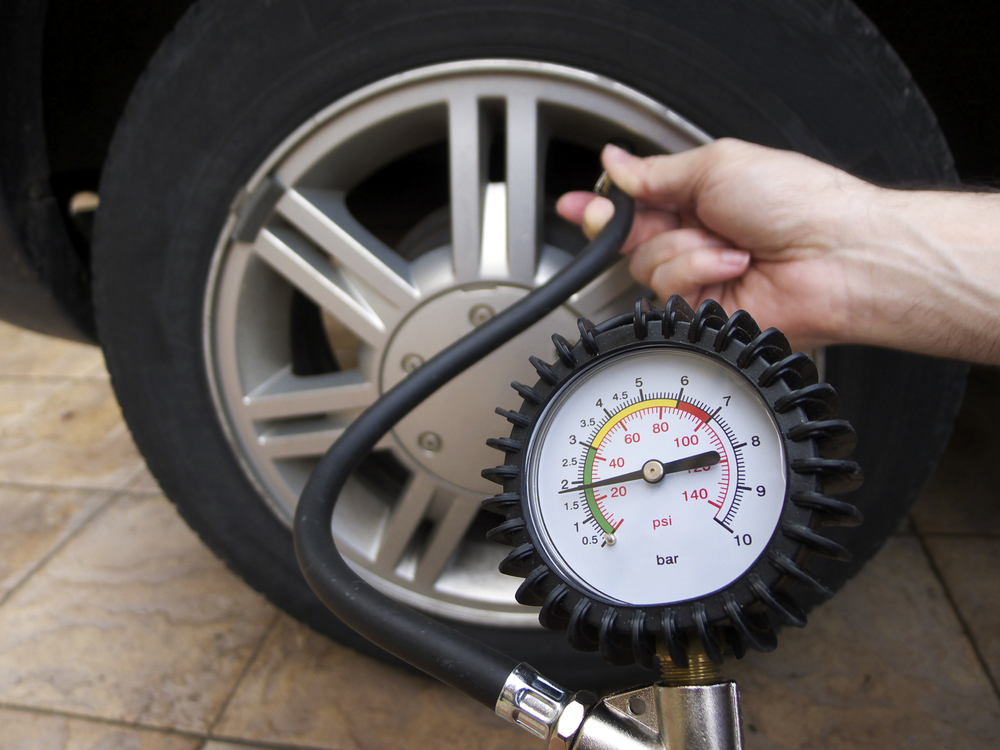
Maintaining proper tire inflation is essential to the overall performance of your vehicle. Properly inflated tires provide a longer lifespan, quicker steering response, optimum fuel efficiency, and a more balanced ride than tires that are not adequately maintained. The best, and easiest, way to get the most out of your tires is to know how to check tire pressure.
1. Gather Your Tools
The items you will need to adequately check your tire pressure is a tire pressure gauge, air compressor, and a pen and paper. If you do not own an air compressor, the one found at most gas stations is more than capable of getting the job done.
2. Let Your Tires Cool Off
PSI (pounds per square inch of pressure) is specified by vehicle manufacturers based on cold tires. When the car has been parked and turned off for three or more hours, then the tires are considered cold. Alternatively, if the vehicle has been driven at a moderate speed for less than a mile, then the tires are also considered cold at this stage.
3. Check the Recommended PSI for Your Vehicle
Mazda vehicles all have varying PSI due to the size of the vehicle and the type of tires being used. Check your owner’s manual for the PSI that is recommended for your vehicle’s tires. If you cannot find the information you need, do not hesitate to call us and let us look it up for you.
4. Write Down the Recommended PSI
Use your pen and paper to write down your findings of the recommended PSI levels. We recommend writing these on a separate sheet of paper from your owner’s manual so you can use this paper to compare and write down the current values of each tire.
5. Use Your Gauge to Check the Tire Pressure
Unscrew and remove the valve cap from one tire. Place the pressure gauge down on the valve stem and press it down hard enough to stop the hissing sound. Your gauge will provide a reading. Write down the reading and compare it to the recommended value. Repeat for all four tires.
6. Fill the Tire to the Recommended PSI
If any tires are showing low readings, fill those tires with an air compressor by placing the end of the hose over the valve stem, then press on the lever. Check the PSI again once you have filled the tire. If you have overfilled, simply let some of the air back out. Overinflated tires can decrease traction, decrease impact absorption, and cause premature wear.
Tire pressure gauge accuracy matters. If you feel that your gauge is possibly giving you an inaccurate reading, come to Flood Mazda today and let us double-check your tires and help get you the right gauge for the job. If you encounter an issue at any time, our team of expert technicians can check your tires, patch them, or replace them when needed.




